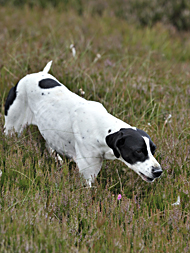
| HOME |
| PROJECT DETAILS |
| PROJECT ADMINSTRATION |
| JOINT RAPTOR STUDY |
| THE MOOR |
| THE GROUSE |
| THE RAPTORS |
| OTHER WILDLIFE |
| DIVERSIONARY FEEDING |
| GAMEKEEPING |
| WILDLIFE SURVEYS |
| NEWS |
| CONTACT |
| PHOTO GALLERY |
| NEWS |
Grouse numbers rise at Langholm and Harriers fledge young in 2013 The continued efforts of the keepering Team at Langholm Demonstration Project seem to be having positive results, with grouse densities in four out of the five study 'zones' at the site, producing an increase in grouse numbers. The weather this year has certainly been better than previous years and has played an important role in combination with the keepering. Sonja Ludwig, the project scientist has reported that 10 young hen harriers have fledged successfully from nests on the study site. She said: "Langholm's harriers continue to be some of the most productive in the UK. The moor management team have protected these nests by controlling foxes and ensured that there is natural prey and diversionary food available. In this way we are demonstrating how the young harriers can survive alongside flourishing grouse broods on this moor".
No grouse shooting at Langholm in 2013 The project team have decided to continue to build grouse population rather than shoot this year. One of the key objectives of the LMDP is to demonstrate how through exemplary habitat management, controlling predator impacts and by treating disease in grouse populations, a sustainable bag of driven grouse can be produced alongside flourishing moorland habitats and species. Every year the project staff monitor grouse numbers in spring and summer so we can assess our progress towards this objective. Spring grouse densities in 2013 of less than 50 birds per 100ha remained low in comparison to many other Scottish grouse moors. However, as on most moors, breeding production of grouse was good this year with an average brood size of 5.4 chicks. As a result the project team found themselves in the position of having to assess whether or not to shoot. The formal grouse counts using pointer dogs during July found a promising number of birds but trial 'drives' (where beaters flush grouse towards a line of guns) on some of the core grouse beats during mid-August, found insufficient grouse for a sustainable programme of driven shooting. The project partners agreed that it would be better to postpone any shooting for this year. With continued effort from the project's gamekeeping team, the postponement should allow the population of grouse to build further to a point that can sustain a harvest in the long term. |
| Other News |
|
Summer Director’s meeting - June 2013 A review of project progress available here Monitoring - June 2012 A seasonal update on monitoring is available here. Harrier dispersal track- October 2011 The map showing the locations of Langholm origin harriers on 18 October 2011 is now available on the Raptors page. Harrier Tagging Programme - September 2011 Links to maps showing the recent locations and past movements of the satellite tagged harriers from Langholm moor are now available on the raptor page. Website update - September 2011 Links to videos on diversionary feeding and red grouse have been added on the relevant pages. The work undertaken by the management team on habitat has been updated on the gamekeeping page. There are now brief notes on the other wildlife page about goats and badgers. July Grouse Counts 2011 In line with the red grouse counts from many parts of Scotland, this year's summer densities of grouse at Langholm have fallen. With the Langholm area being 10-15 days wetter than average in May, and 6-10 days wetter in June, according to the Met Office, this is perhaps no great surprise. But this year's average brood size of 2 chicks for each hen at Langholm is unlikely to be weather alone when the average Scottish red grouse brood was 3.5 chicks per hen. It's probable that other factors are at play and in such years any additional predation and disturbance of broods has a greater impact on overall numbers. So one way of combating the wetter weather is to make sure we maximise good quality heather to offer the grouse shelter. Our keepering team is working hard to make this happen in the face of a large heather beetle outbreak in an important part of the moor. We are also pleased to be able to say that harriers have probably not been the driver of this poor breeding success as monitoring suggests no grouse chicks have been brought to the harrier nests. Nevertheless the implications of these counts are important for the project and the project team is using them to assess future monitoring and trial work on the moor. July 2011: The milestone review by the project's Scientific & Technical Advisory Group of the first three years of the Project (November 2007 to October 2010) is now available for download. See the Project Administration page for the review June 2011: Our apologies to Laurie Campbell for the misidentification of the source of his photographs of native Cranberry and Ravens in the gallery. We request users that any downloads of these images are deleted and apologise for the inconvenience. Press releases• 2 November 2011. Ministerial visit • 21 September 2011. Out of season muirburn licence • 20 July 2011. Langholm project - Review of the first three years • 9 October 2008. Langholm project - one year on • 25 March 2008. Head Gamekeeper Appointed • 20 September 2007. Project launch in Edinburgh |
